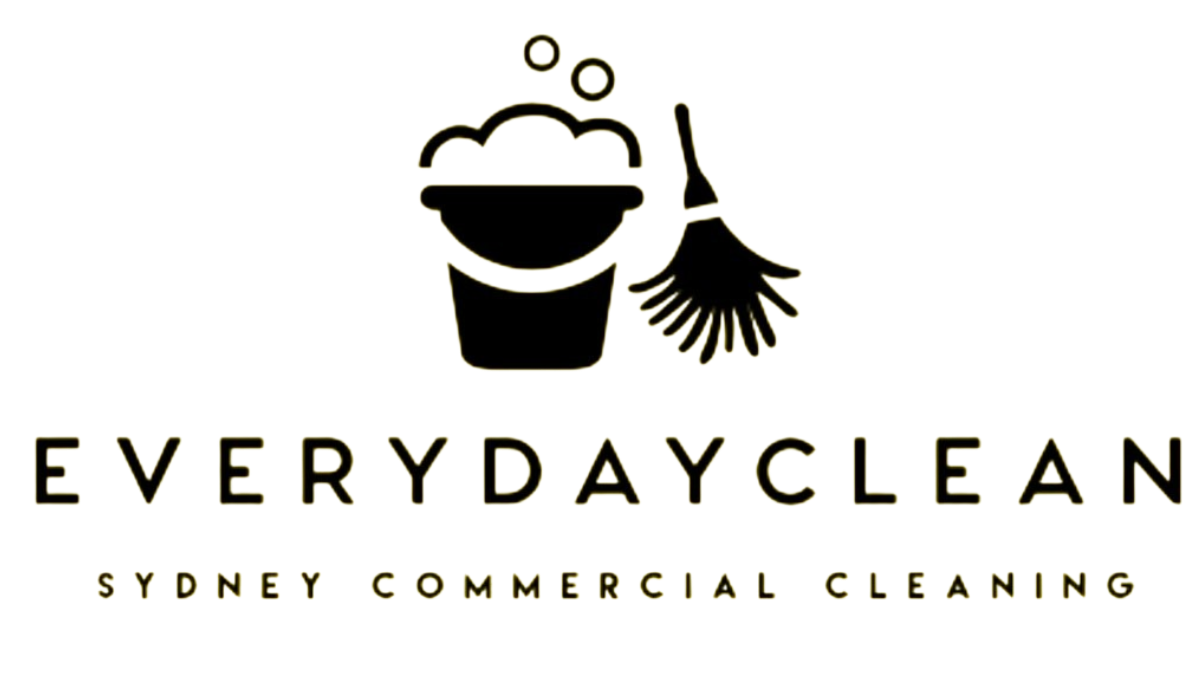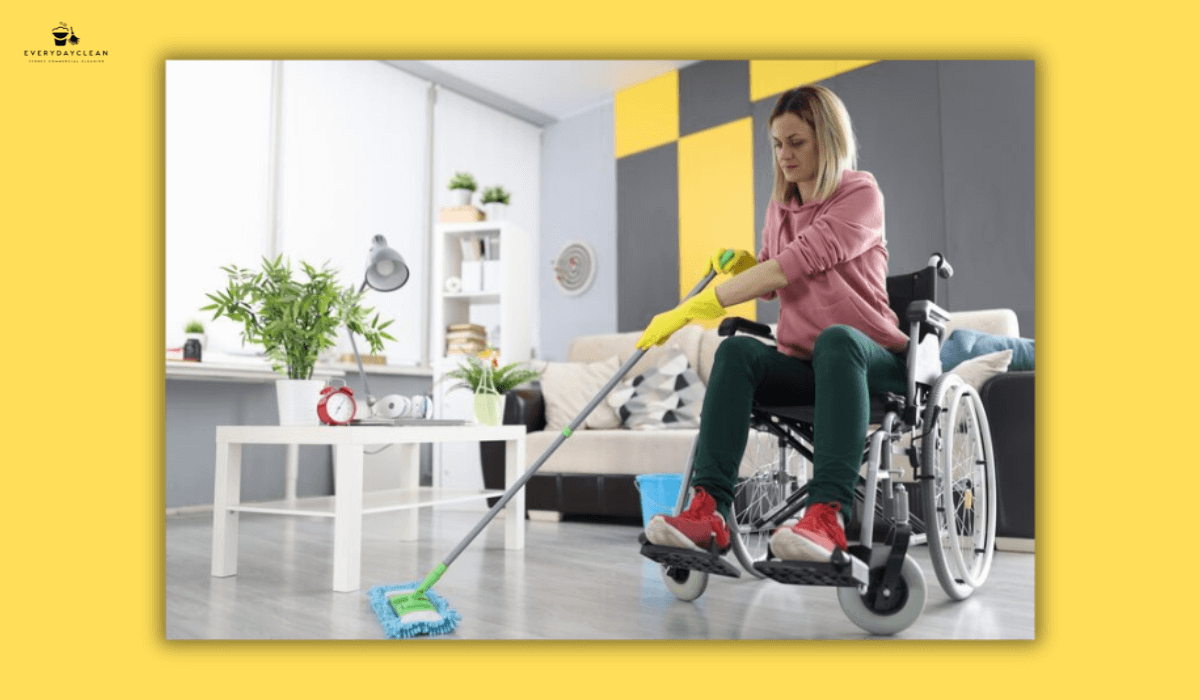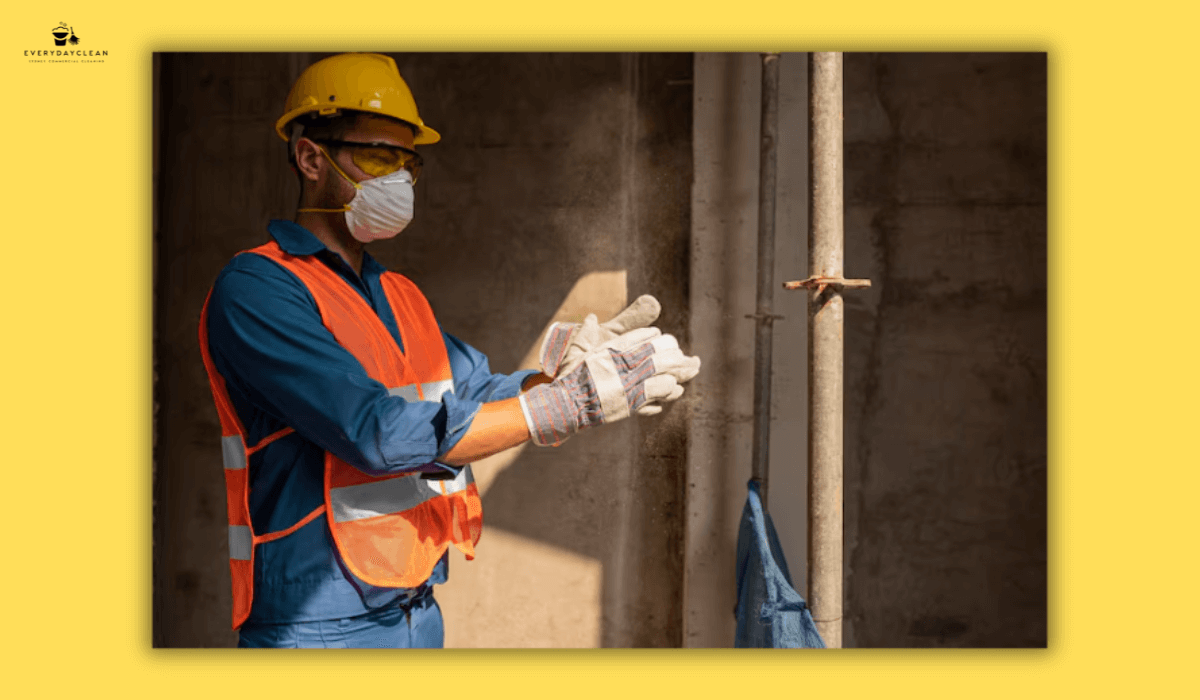Hospital Cleaning Standards: Protocols & Guidelines
Hospital cleaning standards are essential for protecting patients, staff, and visitors in high-risk healthcare environments. These standards define how cleaning should be carried out, what disinfectants must be used, and how staff should be trained. By following established medical cleaning protocols, healthcare facilities can reduce infection risks, meet accreditation requirements, and maintain public trust.
This guide explores the components that shape hospital cleaning operations, with medical facility cleaning guidelines explained clearly for professionals seeking compliance, clarity, and control over cleaning performance.
The Role of Cleaning in Infection Control
Hospital cleaning plays a critical role in supporting infection prevention strategies throughout healthcare facilities. It's not just about aesthetics—cleaning is a frontline defence mechanism.
- Prevents the spread of healthcare-associated infections (HAIs)
Proper surface disinfection interrupts the transmission of harmful microbes. - Reduces microbial load on high-touch surfaces
Consistent cleaning of areas like bed rails, doorknobs, and workstations reduces risk. - Supports surgical and post-operative recovery safety
A clean environment lowers the chance of post-surgical infections. - Aligns with national and international safety regulations
Cleaning programs are essential for compliance with safety codes and healthcare audits.

Medical Cleaning Protocols: Core Requirements
Cleaning in healthcare settings follows structured, risk-driven processes. These medical cleaning protocols are built on science and regulation—not guesswork.
Risk-Based Cleaning Zoning
- Facilities are divided into high-, medium-, and low-risk zones based on exposure levels.
- Colour-coded cleaning tools are used to eliminate cross-contamination between zones.
- High-risk areas like ICUs require more frequent cleaning and dedicated tools.
Approved Chemicals and Disinfectants
- Only TGA-approved disinfectants are permitted, with specific formulas assigned per zone.
- Products must have
hospital-grade efficacy with verified contact times.
- Neutral pH cleaners reduce surface damage and ensure compatibility with medical equipment.
Cleaning Methodology and Sequence
- Cleaning follows a top-to-bottom, clean-to-dirty order to prevent resoiling.
- Daily cleaning addresses ongoing hygiene, while
terminal cleaning is performed after patient discharge or surgery.
- Staff are trained to complete each cycle with checklists and supervision.
Medical Facility Cleaning Guidelines Explained by Area
Different spaces within hospitals require tailored cleaning procedures. Below are the medical facility cleaning guidelines explained by department and function.
Operating Theatres and Surgical Suites
- Pre- and post-procedure cleaning includes all horizontal surfaces, equipment, and flooring.
- Terminal cleaning is mandated every 24 hours or after high-risk surgeries.
General Wards and Patient Rooms
- Daily disinfection of high-touch points like bed rails, remotes, and tray tables.
- Mattress cleaning protocols include encasement checks and linen change schedules.
- Curtains are replaced or laundered regularly to prevent airborne contamination.
Emergency Departments
- Spot-cleaning between patients prevents surface contamination during fast turnover.
- Blood and biohazard response protocols use absorbent powders and disinfectant kits.
Bathrooms and Communal Areas
- Full floor-to-ceiling disinfection covers walls, sinks, and fixtures.
Regular
restocking of soap, towels, and sanitiser, combined with surface sanitisation.
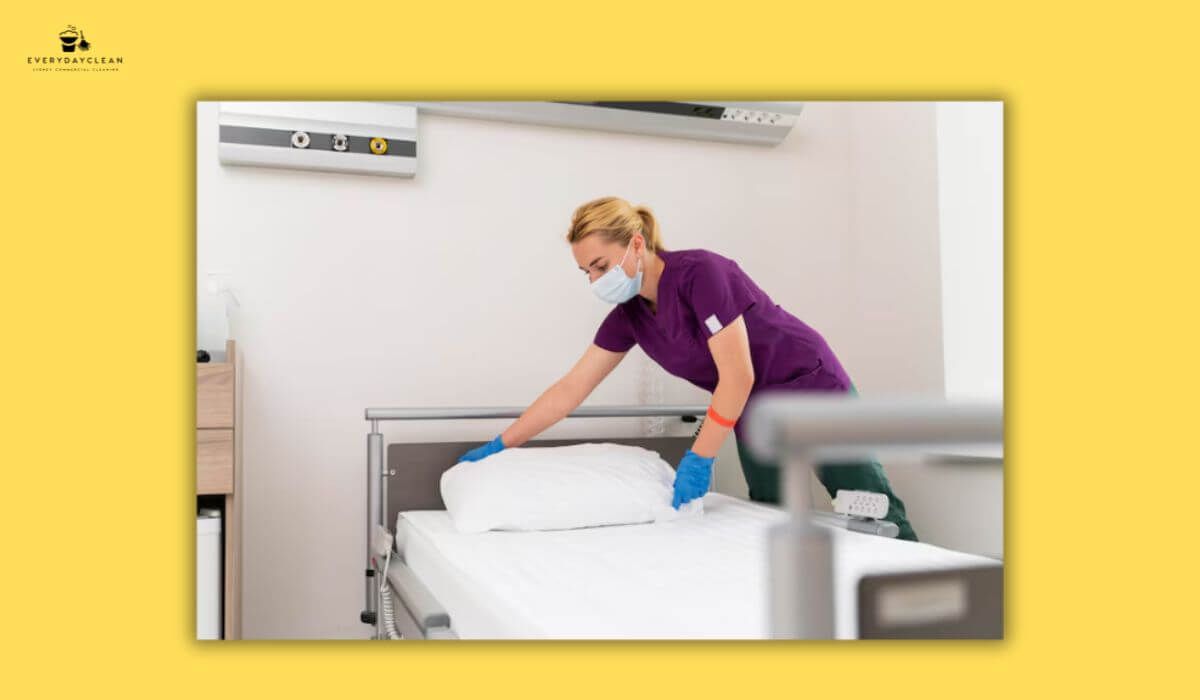
Hospital Cleaning Equipment and PPE Standards
Using the right equipment supports consistent outcomes and keeps cleaning teams protected.
- Microfibre cloths (disposable or laundered by zone) reduce bacteria without spreading residue.
- Dual-bucket systems separate clean and dirty water, reducing cross-contamination.
- PPE (gloves, masks, gowns) is used depending on zone risk and the type of cleaning task.
- Cleaning trolleys are segmented to store tools, chemicals, and waste separately.
Training, Monitoring, and Compliance Systems
Cleanliness depends on consistency—and that means systems for training, monitoring, and compliance must be robust.
- New staff undergo
onboarding training focused on zone risks, protocols, and chemical safety.
- Checklists and sign-off logs verify that every task was completed as required.
- ATP testing and
visual inspections assess cleanliness in real time.
- External audits and
certification reviews hold teams accountable and promote continuous improvement.
Challenges in Implementing Hospital Cleaning Standards
Even the best-designed protocols face implementation hurdles. Real-world settings demand adaptability and resilience.
- High patient turnover in emergency wards can shorten cleaning time windows.
- Staffing shortages or high turnover impact consistency and morale.
- Outsourced vs. in-house cleaning creates variability in training, culture, and accountability.
- Stock management issues with PPE or chemical supplies can delay scheduled cleanings.
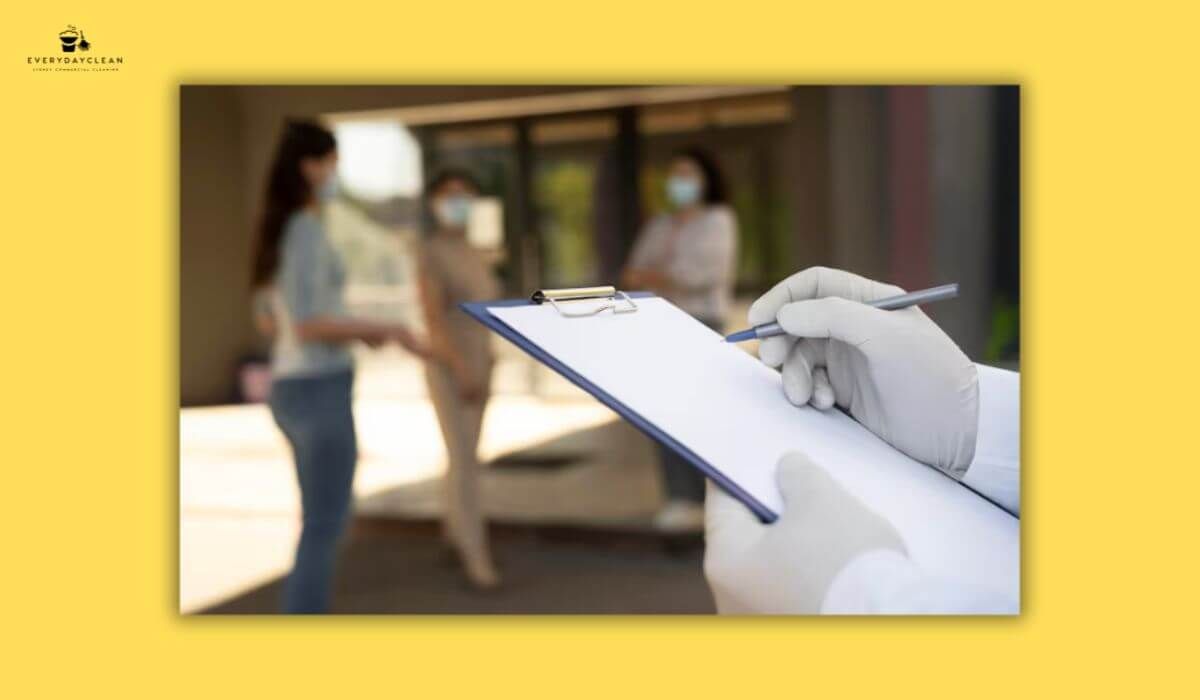
FAQs – Hospital Cleaning Standards and Protocols
Below are answers to common questions surrounding hospital cleaning standards, medical cleaning protocols, and compliance across facilities.
What are the best practices for hospital cleaning?
Best practices include following a colour-coded cleaning system, using hospital-grade disinfectants, adhering to contact times, and regularly cleaning high-touch areas. Staff should follow infection control protocols, wear proper PPE, and document all procedures.
What standards govern hospital cleaning in Australia?
Australian hospitals must follow ACSQHC standards, NSQHS Guidelines, and local health regulations. These cover environmental cleaning schedules, surface disinfection protocols, and training requirements to minimise healthcare-associated infections (HAIs).
How does hospital cleaning help prevent infections?
Effective hospital cleaning removes harmful pathogens from surfaces, reducing the risk of hospital-acquired infections (HAIs). Regular disinfection of high-touch zones (bed rails, door handles, equipment) is critical in breaking chains of transmission.
What role does UV-C light play in hospital disinfection?
UV-C light is used as a supplementary disinfection method in rooms with high infection risks. It kills bacteria, viruses, and spores by disrupting DNA, but should only be used by trained staff and not as a substitute for manual cleaning.
How do Australian hospital cleaning standards compare internationally?
Australia’s standards are similar to those in the UK and US, but focus strongly on risk-based cleaning frequencies, compliance audits, and hand hygiene integration. Local adaptation is often required based on hospital size and patient flow.
Why should hospitals use a professional healthcare cleaning service?
Professional services ensure regulatory compliance, trained staff, proper chemical use, and consistent documentation. This reduces the risk of fines, infection outbreaks, and patient dissatisfaction while improving staff and visitor safety.
Maintaining Hospital Cleaning Standards for Safe Healthcare
Maintaining hospital cleaning standards is more than a compliance requirement—it’s a frontline safeguard in every healthcare facility. With rigorous medical cleaning protocols in place and medical facility cleaning guidelines explained and implemented correctly, hospitals can reduce the risk of infection outbreaks, safeguard accreditation status, and support staff in delivering care in a safe, clean environment.
From operating theatres to bathrooms and waiting areas, the right cleaning tools, trained personnel, and documented routines ensure that every zone operates within safe, compliant standards.
Need help meeting your hospital cleaning standards?
Everyday Clean offers professional cleaning support tailored to the high-risk demands of medical facilities. From PPE-compliant practices to zone-based disinfection systems, our team ensures your hospital meets every operational and safety expectation.
Author’s Box
Author: Everyday Clean Content Team
Everyday Clean is Sydney’s trusted provider of commercial cleaning solutions, including pools, gyms, offices, and strata properties. Our licensed professionals use advanced, eco-friendly equipment to deliver safe, compliant, and spotless results. With deep experience across Sydney’s hospitality, fitness, and residential sectors, we help facilities maintain inviting, healthy environments that guests trust.
